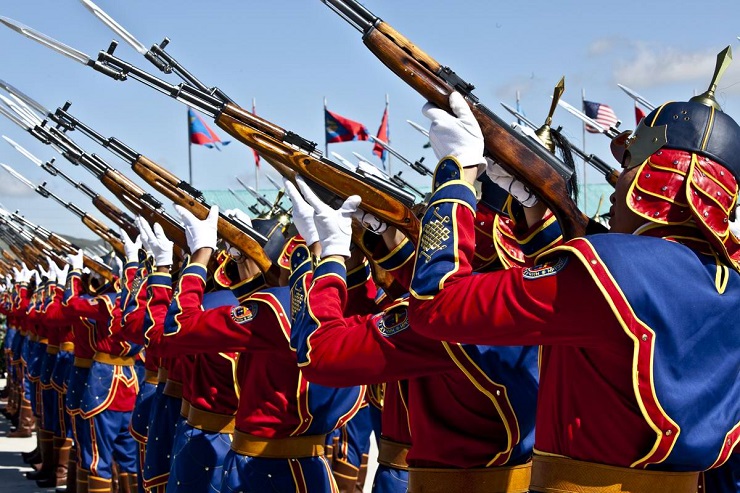2021 will mark the centenary of Russia’s diplomatic relations with Mongolia. How have links between these two countries developed over the past century? And what is the present status of the partnership between the two nations? What future is there for cooperation between Russia and Mongolia?
For many centuries, Mongolia was part of China. In the first half of 1921 Mongolia, at the time a Chinese protectorate, was occupied by White Army forces led by Baron Roman von Ungern-Sternberg, who had fled from the Red Army during the Russian Civil War. During his occupation of Mongolia he reinstalled the country’s traditional Khanate government. But the general’s time of triumph did not last for long. Mongolia was occupied by Red Army troops later the same year, and after the new Khan died in 1924 the People’s Republic of Mongolia (PRM) was established.
The PRM developed close ties with the USSR. For one thing, Mongolia was – until the mid 1940s – one of the few other countries in the world with a Socialist government. The USSR provided its ally with considerable military and economic support. Between 1930 and 1940 Mongolia’s industrial output increased more than twentyfold. The USSR played an important role in the secularization of the new republic, which contributed to the formation of a modern state. And in 1939, in the battle of Khalkhin Gol, the USSR supported Mongolia’s independence against Japanese aggression. To commemorate the 80th anniversary of the Soviet and Mongolian victory in that campaign, in 2019 specialists from Russia erected a four-meter monument to Marshal Zhukov, the commander of the joint armies, in the Khalkhin Gol region.
During the Second World War Mongolia fought alongside the USSR and provided it with a great deal of material support. The PRM gave the USSR considerable sums of money for the manufacture of military hardware, and organized convoys to supply food and equipment to Soviet soldiers. In order to provide this support, Mongolia made such great sacrifices that in 1944 the country suffered from famine. The PRM also provided the USSR with more than 500,000 horses. According to some sources, one in five horses used by the Red Army came from Mongolia. As the famous Soviet general Issa Pliyev noted in his memoirs, Mongolia horses arrived in Berlin alongside the Soviet tanks. In fact, the support provided by Mongolia was just as important as that provided by the USA under the Lend-lease program.
Until 1945, the USSR was the only country to recognize Mongolia as an independent nation. The rest of the international community still considered it to be part of China. In 1945 a referendum was held in Mongolia, with an absolute majority voting in favor of independence from China. It was only thanks to the USSR’s political support that other countries followed suit and recognized its status as a sovereign nation.
In 1961 supported the PRM’s accession to the United Nations. Between 1950 and the 1980s the USSR and Mongolia were bound together by close economic ties. The USSR was Mongolia’s key export and import partner. It also contributed a great deal to Mongolia’s industrialization, upgraded its infrastructure, organized the construction of railways, and promoted the development of its national culture and the two countries shared scientific expertise.
Shortly after the collapse of the USSR in 1991, cooperation between the two countries decreased dramatically. The 1990s were a very difficult time for Mongolia. The country suffered from disastrous levels of inflation, crime increased rapidly, and GDP fell considerably. Mongolia found itself in urgent need of foreign aid, but Russia, struggling with its own economic problems, was in no position to provide support. As a result, towards the end of the 1990s China started to play a much larger role in Mongolia’s economy.
Nevertheless, the beginning of the 2000s saw a gradual revival of economic relations between Russia and Mongolia. Year by year trade between the two countries is increasing, although it is still much lower than it was during the Soviet period.
In September 2019 Vladimir Putin, President of Russia, visited Ulaanbataar, Mongolia’s capital, for a meeting with President Khaltmaagiin Battulga. During the talks, the two countries signed an open-ended Treaty on Friendship and Comprehensive Strategic Partnership. The two leaders expressed the hope that their countries would continue to develop their relationship based on mutual trust. The Russian president also stressed the importance of increasing trade between the two countries.
There is currently a considerable amount of cultural exchange between Russia and Mongolia. In 2020 the Russian government increased the number of university grants available and now more than 500 Mongolian students can study at Russian higher education institutions. This is an important trend, as the availability of well-educated specialists will enable Mongolia to significantly boost its economy in the near future. In September 2021, as part of the 6th Eastern Economic Forum, Vladivostok will host an international academic conference to mark the centenary of diplomatic relations between Russia and Mongolia. The event will be co-organized by the Russian Academy of Sciences’ Institute of Eastern Studies. Academics from both countries consider this to be an extremely important event, since it will both help strengthen cultural exchange and promote the study of the history of relations between the two countries.
In conclusion, we can say that there is a great deal of potential for cooperation between Russia and Mongolia. Firstly, Mongolia has not forgotten how the USSR helped it achieve independence and become a sovereign state. Secondly, given the close geographical proximity of the two countries, their continuing cooperation makes logistical sense. And thirdly, both Russia’s and Mongolia’s economies are growing – and economic growth always tends to favor the development of trading partnerships.
Petr Konovalov, a political observer, exclusively for the online magazine “New Eastern Outlook”.
Related posts:
Views: 0
 RSS Feed
RSS Feed

















 August 6th, 2021
August 6th, 2021  Awake Goy
Awake Goy 
 Posted in
Posted in  Tags:
Tags: 
















